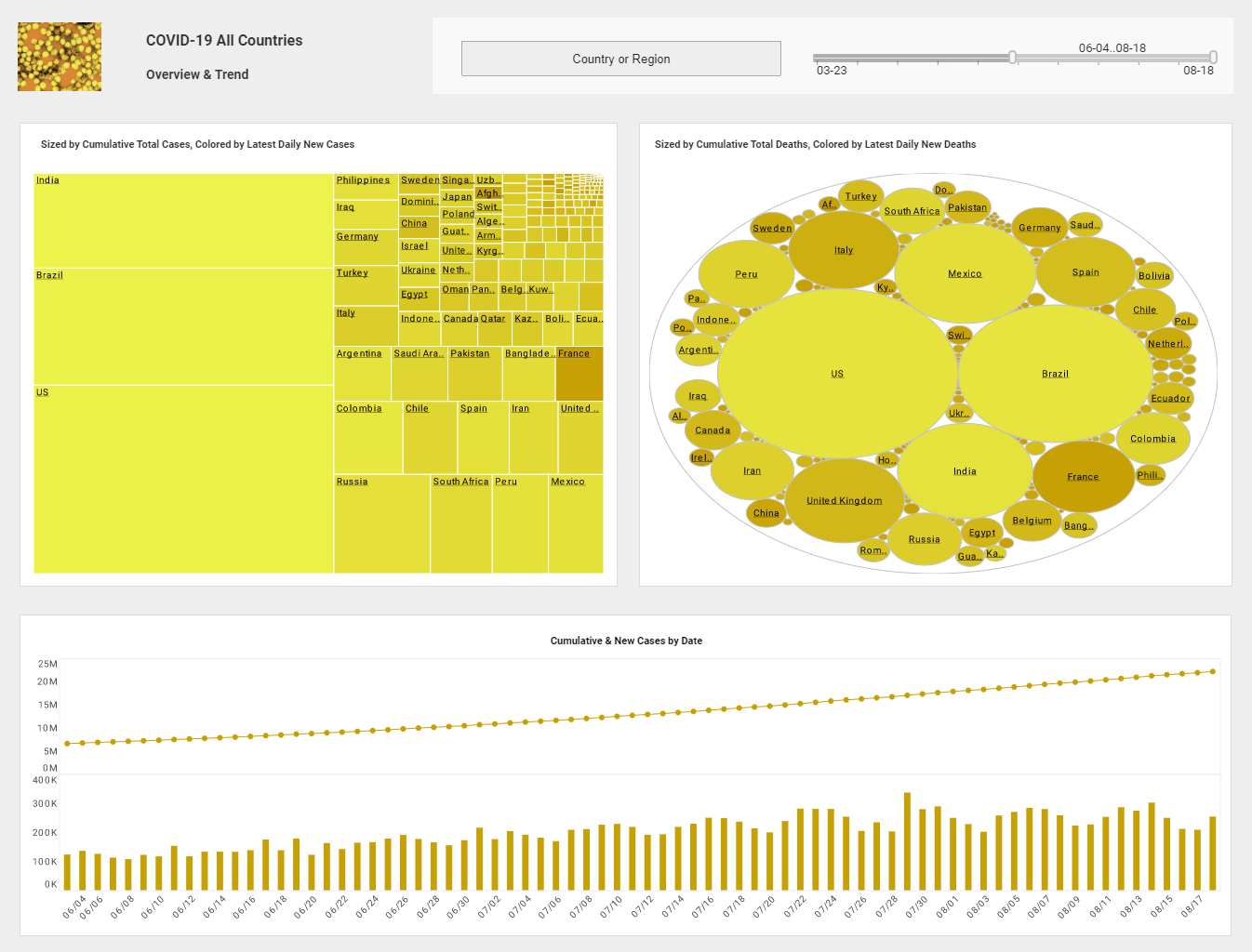InetSoft Webinar: Solving Big Data Problems with Hadoop
This is the continuation of the transcript of the DM Radio show "Avoiding Bottlenecks and Hurdles in Data Delivery." InetSoft's Principal Technologist, Byron Igoe, joined industry analysts and other data management software vendors for a discussion about current issues and solutions for information management.
Whether it’s changing because of competitiveness or regulatory issues, or that ability to respond quickly without having to build up new types of materialized views is critical for them to be able to respond in a cost effective way. That real time response is absolutely one of the driving features.
I think I agree with Philip, that the big data crisis that was in the past is being addressed. Technologies are there. They can solve big data problems with Hadoop and other types of things, but it is that blending of those different streams of those different data sources that are really the challenge, that these new technologies like data virtualization and data mashup address in a cost effective manner.
Eric Kavanagh: Yeah, let's see Philip any comment from you on where we are here?
Philip: Yeah, well we have mentioned data federation few times here. And also I would like to tie federation back what I almost was talking about, what Byron Igoe of InetSoft was talking about. He was talking about self-service BI and the need to sort of deliver the product of BI sooner, and I do see data federation used with this kind of person bottleneck.
| #1 Ranking: Read how InetSoft was rated #1 for user adoption in G2's user survey-based index | Read More |
We do see companies just with the pace of business nowadays the business people just can't sit around for 90 days waiting for the BI team to create a new report. For them self-service reporting is important. But we are also seeing a kind of practice called agile BI, and agile BI has some overlap here, and so in both agile BI and self-service BI, I think federation is used. Let me explain how.
With self-service reporting the users are typically mildly technical or not technical at all, so you got to give them some database layer and a sort of federated data layer if it really works well in self-service BI. In fact we did publish a TDWI best practice report on self-service BI a few months ago, and people can go to our Web site and get that for free and read it.
It’s one of our big 40 pagers, and I commissioned Claudia Imhoff and Colin White to research and write that. So obviously they have a lot of insights so they talk about the use of federation coupled with self-service BI. Also with agile BI typically it’s not self-service. You do have technical people involved. It is just they get to create reports faster.
They have got to create the data sheets behind them faster. And we are finding that agile BI works very well with federation and data mashup because you think one of the agile method things is you want to get a prototype of a report in front of the business user. He is going to consume it for the most part as early on as possible, and you want to sort of focus on the presentation, but not necessarily have all the data together.
So data mashup is really absolutely wonderful for providing that sort of data in a hurry for these early prototypes and then as you do the iterations, that agility requires you can come back and polish work from the data layer behind it. So I am saying data mashup is very useful with these practices agile BI and self-service BI to help us speed up that person bottleneck.
 |
Read the top 10 reasons for selecting InetSoft as your BI partner. |
Richard Walker: Let me add to that. This is Richard Walker. What we have found for client is they create what they called a controlled self-service BI environment. What that means is the IT department is now responsible for creating sort of these certified aggregated business views, that the businesses agreed on, that is around the certain set of metadata, all right, or a mega mart, whatever you want to call it, all right.
Okay, these are the certified revenues. We do a view which is a view across these different sources. Then people out in the business can access those certified views and have confidence that that the view is going to be delivering this agreed on set of information. Then they can take their local data and start bringing it together using other BI tools such as what Byron was talking about, where they can match it together using those certified views what their local data, using different types of tools whether to use in the data virtualization or data mashup systems, but you sort of you give this controlled self-service BI for the organization from that standpoint.
| Previous: Deliver Real Time Data |


